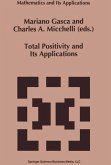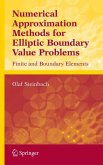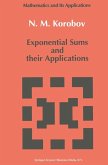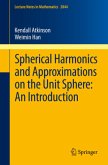This book brings together many areas of mathematics that focus on methods to compute the number of integral points in suitable families or variable polytopes. The book is written by two distinguished authors and excellent examples drive the exposition.
Several mathematical areas that have been developed independently over the last 30 years are brought together revolving around the computation of the number of integral points in suitable families of polytopes. The problem is formulated here in terms of partition functions and multivariate splines.In its simplest form, the problem is to compute the number of ways a given nonnegative integer can be expressed as the sum of h fixed positive integers. This goes back to ancient times and was investigated by Euler, Sylvester among others; in more recent times also in the higher dimensional case of vectors. The book treats several topics in a non-systematic way to show and compare a variety of approaches to the subject. No book on the material is available in the existing literature.Key topics and features include:- Numerical analysis treatments relating this problem to the theory of box splines- Study of regular functions on hyperplane and toric arrangements via D-modules- Residue formulae for partition functions and multivariate splines- Wonderful completion of the complement of hyperplane arrangements- Theory and properties of the Tutte polynomial of a matroid and of zonotopesGraduate students as well as researchers in algebra, combinatorics and numerical analysis, will benefit from Topics in Hyperplane Arrangements, Polytopes, and Box Splines.
Several mathematical areas that have been developed independently over the last 30 years are brought together revolving around the computation of the number of integral points in suitable families of polytopes. The problem is formulated here in terms of partition functions and multivariate splines.In its simplest form, the problem is to compute the number of ways a given nonnegative integer can be expressed as the sum of h fixed positive integers. This goes back to ancient times and was investigated by Euler, Sylvester among others; in more recent times also in the higher dimensional case of vectors. The book treats several topics in a non-systematic way to show and compare a variety of approaches to the subject. No book on the material is available in the existing literature.Key topics and features include:- Numerical analysis treatments relating this problem to the theory of box splines- Study of regular functions on hyperplane and toric arrangements via D-modules- Residue formulae for partition functions and multivariate splines- Wonderful completion of the complement of hyperplane arrangements- Theory and properties of the Tutte polynomial of a matroid and of zonotopesGraduate students as well as researchers in algebra, combinatorics and numerical analysis, will benefit from Topics in Hyperplane Arrangements, Polytopes, and Box Splines.
From the reviews:
"This book brings together several areas of mathematics that have developed mostly independently over the past 30 years. ... the book is self-contained. ... provide an illuminating class of examples, which are investigated throughout the book. The writing is consistently clear, with careful attention paid to detail. ... the determined reader will find it an ultimately rewarding read, and certainly worth the effort." (Alexander I. Suciu, Mathematical Reviews, Issue 2011 m)
"This book revisits the paper of Dahmen and Micchelli and reproves some of their results ... by different methods. ... The book is written at a relatively elementary level ... . A motivated reader will find it well worth the effort." (G. K. Sankaran, Zentralblatt MATH, Vol. 1217, 2011)
"This book brings together several areas of mathematics that have developed mostly independently over the past 30 years. ... the book is self-contained. ... provide an illuminating class of examples, which are investigated throughout the book. The writing is consistently clear, with careful attention paid to detail. ... the determined reader will find it an ultimately rewarding read, and certainly worth the effort." (Alexander I. Suciu, Mathematical Reviews, Issue 2011 m)
"This book revisits the paper of Dahmen and Micchelli and reproves some of their results ... by different methods. ... The book is written at a relatively elementary level ... . A motivated reader will find it well worth the effort." (G. K. Sankaran, Zentralblatt MATH, Vol. 1217, 2011)








